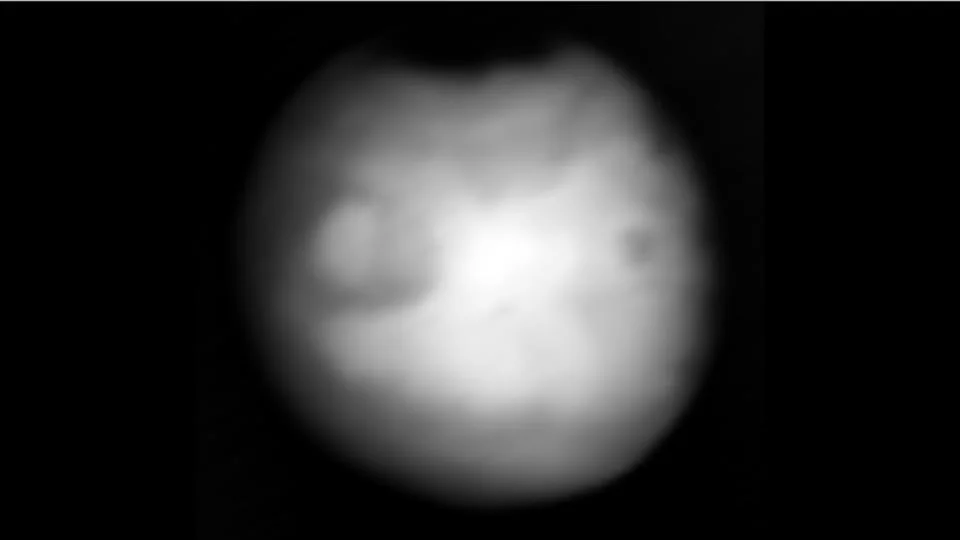
NASA’s Europa Clipper: Mars Flyby Unveils Secrets of Jupiter’s Icy Moon
NASA's Europa Clipper spacecraft, currently on its epic journey to Jupiter's moon Europa, recently executed a crucial Mars flyby, capturing a captivating infrared image that's more than just a pretty picture. This flyby served as a critical test for the spacecraft's instruments, offering valuable insights into the potential habitability of Europa's hidden ocean.

A Martian Photo Op with a Purpose
On March 1, 2025, the Europa Clipper skimmed just 550 miles above the Martian surface, leveraging the planet's gravity for a trajectory adjustment. But this wasn't just about navigation; it was a golden opportunity to test the spacecraft's sophisticated instruments, including the E-THEMIS (Europa Thermal Imaging System).
E-THEMIS, designed to scan Europa's surface for signs of geological activity, captured over 1,000 grayscale images of Mars in just 18 minutes. These images were later colorized to reveal temperature variations, with warmer regions appearing red and cooler areas in blue.
Why Mars? The Perfect Calibration Target
As Phil Christensen, principal investigator for E-THEMIS at Arizona State University, explained, the goal was to ensure the instrument performed as expected. "We wanted no surprises in these new images. The goal was to capture imagery of a planetary body we know extraordinarily well and make sure the dataset looks exactly the way it should, based on 20 years of instruments documenting Mars." By comparing the new infrared imagery with existing thermal maps from NASA's Mars Odyssey orbiter, the mission team could validate the accuracy of E-THEMIS before it reaches its ultimate destination: Europa.
Unlocking Europa's Secrets: A Hunt for Habitable Zones
The data gathered from the Mars flyby is crucial for the Europa Clipper's primary mission: to assess the habitability of Europa's subsurface ocean. Infrared imaging will help pinpoint regions where the ocean might be closest to the icy crust. As Christensen notes, if Europa is active, fractures in the ice could appear warmer than the surrounding areas, indicating potential upwelling from the ocean below.
Beyond Europa: Implications for Future Space Exploration
The advancements in infrared imaging technology have implications extending far beyond Europa. They can be used for future astronaut safety by identifying hazardous terrains, detecting water resources on the Moon and Mars, and mapping habitable zones for potential human settlements.
Ready for Europa
With the Mars flyby successfully completed, Europa Clipper passed its first inflight test of its radar instrument, the spacecraft is now fully prepared for its next gravity assist from Earth in 2026. Scheduled to enter Jupiter's orbit in 2030, the mission promises to unveil the mysteries of Europa and its potential for harboring life. What other secrets does Europa hold beneath its icy shell? Share your thoughts and predictions in the comments below!